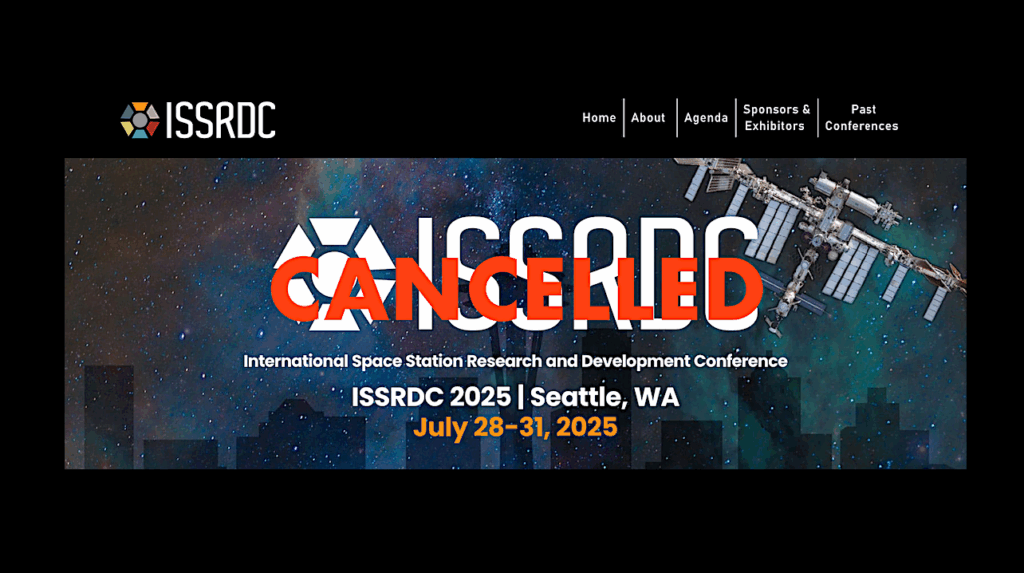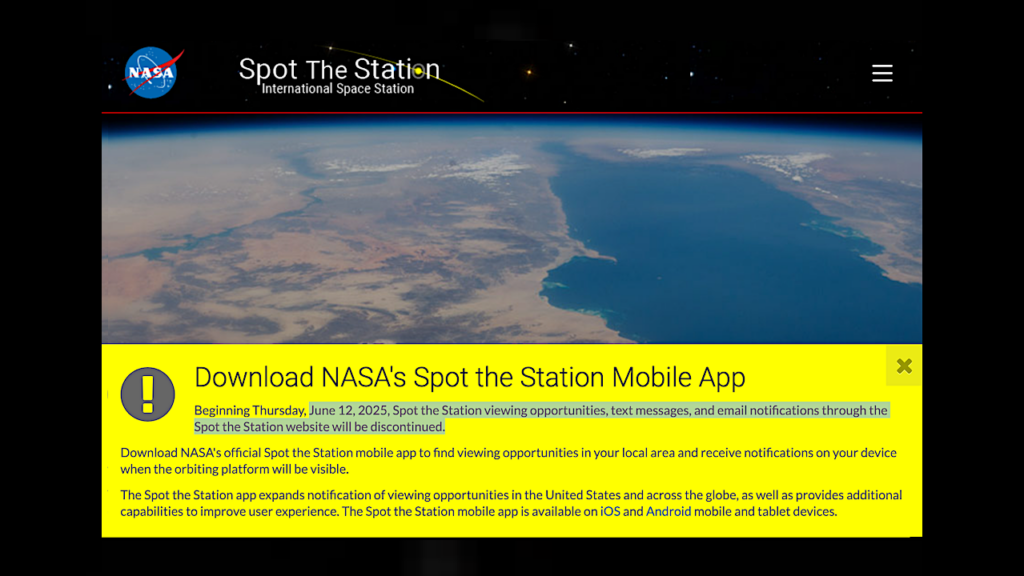NASA Has Rocket Problems But Its Payload Science Is Cutting Edge

 Keith’s note: Reading NASAWatch you might think that this site has a preoccupation with clumsy projects (like SLS) that are over budget, behind schedule, and lacking in terms of mission focus. That is not representative of NASA as a whole. Here is one example – I saw this article in Science last week and thought that this research was worth re-featuring – especially given that a bunch of science is headed for ISS in a week or so. When I worked at NASA helping to design Space Station Freedom, my focus was life and materials science payloads. These little DNA sequencing devices (which will fit in your pocket) were impossible back then – and if they were, would have required several payload racks and a lot of power and crew time. While NASA has problems with its rockets, payload technology is moving ahead at warp speed.
Keith’s note: Reading NASAWatch you might think that this site has a preoccupation with clumsy projects (like SLS) that are over budget, behind schedule, and lacking in terms of mission focus. That is not representative of NASA as a whole. Here is one example – I saw this article in Science last week and thought that this research was worth re-featuring – especially given that a bunch of science is headed for ISS in a week or so. When I worked at NASA helping to design Space Station Freedom, my focus was life and materials science payloads. These little DNA sequencing devices (which will fit in your pocket) were impossible back then – and if they were, would have required several payload racks and a lot of power and crew time. While NASA has problems with its rockets, payload technology is moving ahead at warp speed.
Pocket-sized sequencers start to pay off big, Science
“Aaron Burton, an astrobiologist at NASA’s Johnson Space Center in Houston, Texas, who is exploring how nanopore devices could help search for life elsewhere in the solar system, agrees: “The rapid improvements have made it a viable technology right now, rather than an emerging technology that ‘could be good in a few years.'” … MinION’s portability continues to prove its value. With the aid of warming packs that kept the machine’s chemistry working, Sarah Johnson, a planetary scientist at Georgetown University in Washington, D.C., used one to generate long reads of DNA while collecting specimens in an Antarctic dry valley, a setting sometimes used as a proxy for Mars.”
Sequencing DNA in Space, earlier post SpaceRef
“NASA is not often known for making the best use of existing COTS (commercial off the shelf technology) aboard the ISS. Then again, sometimes they are. This is an example of when the agency really grabs cutting edge biotech and sends it into space. There’s usually quite a lag time. The reasons range from slogging through the often cumbersome payload safety and integration process to people at NASA who are simply not up to date with what the ral world is doing in their field. In this instance a rather remarkable gizmo is being flown in space that truly puts genetic sequencing in the palm of your hand. Indeed, its almost as if NASA was flying part of a version 1.0 Tricorder in space. This is cutting edge technology folks.”
– First DNA Sequencing Conducted in Space, earlier post
– One Billion Base Pairs Sequenced on the Space Station, earlier post








Good stuff Keith. There are many cool things that have resulted from ISS and space flight in general over the years. But even I have difficulty making a to 10 list of pragmatic, society involving/helping, everyday items that have resulted from ISS; and I have worked on the program for 24 years and counting. Even considering the NASA Spinoffs and published scientific work. And this is ever so true when I talk to the public about the “importance” of ISS.
I challenge the readers here to come up with a top 10 list of items that have resulted directly from ISS alone (20 years) that continue to influence society at large; that make life better for society at large. Proven, pragmatic, useful things that you might interact with every day. Thoughts?
That’s asking a bit much. How well would any government lab, or any lab of any sort, due by those standards? Resulted directly and exclusively from one lab? Bell Labs claimed the invention of the laser, but there were really many other organizations involved in making it as influential as it has become. The same is true of most discoveries. It’s rarely all one group or lab alone.
Definitely cool stuff.
Did this stuff factor into the plot of the movie Life in any way, DNA sequencing run amuck or anything? Remember, such (for then highly advanced though with comparatively clunky equipment) technology was woven into Jurassic Park (featured specifically in the novel) wherein Crichton worried about the potential dangers of having such a powerful capability readily accessible to unscrupulous types. Just curious. Sometimes Hollywood grabs headlines in a bid to be ‘relevant’…
NASA also builds good instruments in other fields. For planetary science and particles and fields measurements, Goddard makes some of the best quadruple mass spectrometers. Goddard and JPL both make great magnetometers (although the long-standing rivalry or feud between the two groups is a distraction.) But they are expensive.
When it gets to the point where you have a reputation for them, shouldn’t they be licensing the technology/process to a commercial operator? Or is each unit still unique/experimental enough that this couldn’t be done (I suspect Goddard/JPL would answer “yes” if asked)?
Each new instrument tends to be adaptations or evolution of the previous one, not just a copy. But that wouldn’t be an insurmountable problem for outsourcing the hardware. But that’s not the real problem.
These are instruments for scientific missions and each one of those spacecraft are unique designs. So everything about the interface between the instruments and the spacecraft is custom. That’s especially a problem for magnetometers, where someone needs to work closely with the spacecraft team to minimize magnetic fields from the spacecraft and its electronics. Calibration (and using it to correctly interpret data) is still a bit of an art for mass spectrometers, so a close relationship between the builder and the science team is helpful.
There is also the overhead associated with flying on a mission of this sort. Even if you were buying an exact copy of a previous instrument, the project would expect you to go through all the steps required for a clean-sheet design, or do significant work justifying why you aren’t. You could not say you didn’t need to carry mass margin, just because the hardware is an exact copy of something you built before. (You probably do so with paperwork and reviews to prove heritage and get a waiver from the project’s margin policies.) You definitely couldn’t skip design reviews on the grounds that you already have a flight-proven design.
Given all that, I think you’ve lost the benefits of handing a proven design over to a commercial company and paying to build an instrument to print. In many cases, I wouldn’t mind doing that, but if you have to fight again the project and class A/B mission requirements, it probably isn’t viable.
No doubt my confusion on this point reflects total unfamiliarity with the process.
The design review process, in part, offers assurances that the spacecraft can actually operate and do the specified job, right? What would be better evidence than pointing to an identical twin that is correctly functioning?
That would make perfect sense for a mission or spacecraft level design review. At those, presentations for each instrument and system are about an hour. That sounds about right for going over the requirements, showing how the commercial instrument satisfies them, and having time to cover plans for operations and data analysis.
However, the process also calls for design reviews at the instrument level. The last one I was involved in ran two and a half or three days, with four outside experts as the review panel. The amount of material prepared for these reviews is quite large. One Cassini PI has a comparison slide showing his instrument (about two feet on a side) and a truck being loaded with the half a dozen filing cabinets which contained all the documentation required for the instrument’s critical design review.
I just can’t see walking into an instrument design review and saying, “Our plan is to buy model 46 from Acme Rockets-Powered Products, Inc. Here’s the company’s spec sheet and the binder with the 500 pages of certificates they sent us. Are we done now?”
I also don’t know how the panel would respond to the fact that their input was limited to, “Yes, go ahead”, “Buy model 43 instead” and “no” (which would blow the entire project’s schedule.) They are expected and used to recommend a few to a few dozen design changes. When you are buying a stock, commercial product, that isn’t really an option.
Illustrates the value of NASA concentrating on making things useful for space, or for observing or investigating planetary bodies, and getting out of the launch business. Leave the transportation up to the private sector, and continue their excellence with space based (or other planetary based) applications and probes. Transportation services would be a viable private sector objective, with a profit motive that would be attractive to all the “new space” and old space companies.
A natural, and obvious, evolution that is being resisted, even now.
Or better yet, rather than suggesting that anything of practtical value is an inadvertent byproduct of sending people to Mars, allow NASA to support research and development of practical value to America as a primary mission.
Which is what Earth Sciences do. The issue is that Earth Sciences produces actionable information. Those pesky factoids that require uncomfortable policy decisions like the Montreal Protocol, the Paris Climate Accord etc…
G
No link to Amazon? I have little knowledge of this field but this technology in pocket size as compared to racks of equipment will open this capability to a lot more people (something that may need regulation to prevent abuses?)
You are very correct Keith. NASA is at the vanguard in instrument development (remote sensing, field, and laboratory), numerical modeling, and research. Check the number of peer reviewed publications coming out of, for example, Goddard. I will venture out of my field to submit that science is doing well because: a) we are hypothesis driven – we have a somewhat collective vision of where we have to go to make progress; b) scientists are not constrained as much as the space flight groups by things like ISO, EVM, the 7120 and all the other procedures that put processes over substance. We need to spend more time engineering and less time powerpointing.
AND, NASA needs to do things as only NASA can. Many can build a big rocket. Why are we building rockets? We need to fly into orbit.
G.